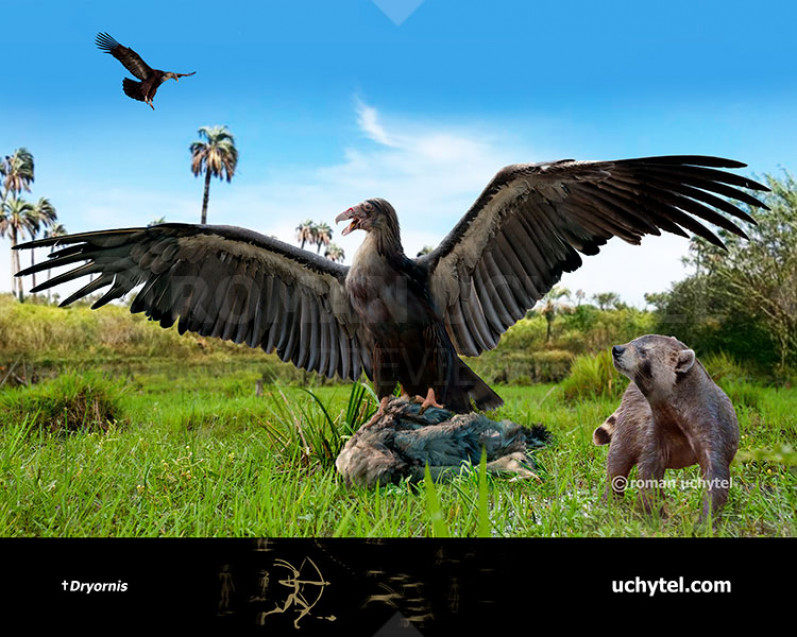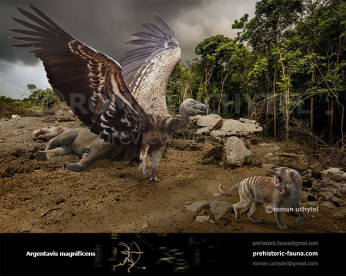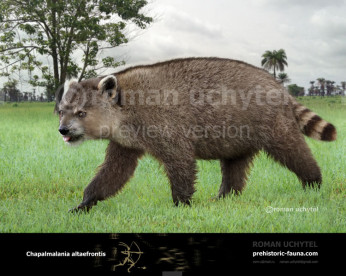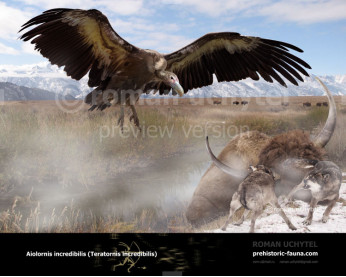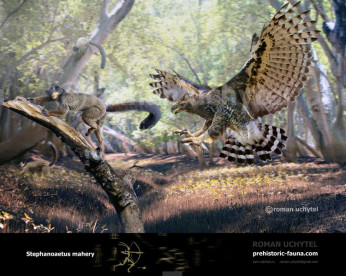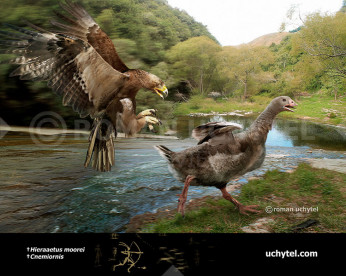Дрiорніс
2029720297Дрiорніс (†Dryornis (Moreno & Mercerat, 1891))
Ряд: Cathartiformes
Родина: Cathartidae
Розміри: Розрахунковий розмах ~ 4 м, висота - 150 см, вага - 26 кг.
Розповсюдження: ранній міоцен - пліоцен Аргентини (Південна Америка)
Типовий представник: †Dryornis pampeanus
Дрiорніс, також відомий як аргентинський гриф, є вимерлим представником роду катартид (американські грифи). Цей великий птах відомий з раннього міоцену - пліоцену Південної Америки, був падлоїдом та єдиним крилатим хижаком у своїй екосистемі.
Скам'янілості були зібрані на пляжі Ла-Естафета в Мар-дель-Плата, Буенос-Айрес, Аргентина, і належали до формації Чападмалал з пізнього пліоцену.
Dryornis вважається найбільшою з відомих катартиформ, крім Teratornithidae. Аналіз відомих викопних матеріалів показує, що він мав масу тіла 26 кг, що на 50% більше, ніж у сучасного андського кондору.
Дрiорніс (†Dryornis (Moreno & Mercerat, 1891))
Ряд: Cathartiformes
Родина: Cathartidae
Розміри: Розрахунковий розмах ~ 4 м, висота - 150 см, вага - 26 кг.
Розповсюдження: ранній міоцен - пліоцен Аргентини (Південна Америка)
Типовий представник: †Dryornis pampeanus
Дрiорніс, також відомий як аргентинський гриф, є вимерлим представником роду катартид (американські грифи). Цей великий птах відомий з раннього міоцену - пліоцену Південної Америки, був падлоїдом та єдиним крилатим хижаком у своїй екосистемі.
Скам'янілості були зібрані на пляжі Ла-Естафета в Мар-дель-Плата, Буенос-Айрес, Аргентина, і належали до формації Чападмалал з пізнього пліоцену.
Dryornis вважається найбільшою з відомих катартиформ, крім Teratornithidae. Аналіз відомих викопних матеріалів показує, що він мав масу тіла 26 кг, що на 50% більше, ніж у сучасного андського кондору.

